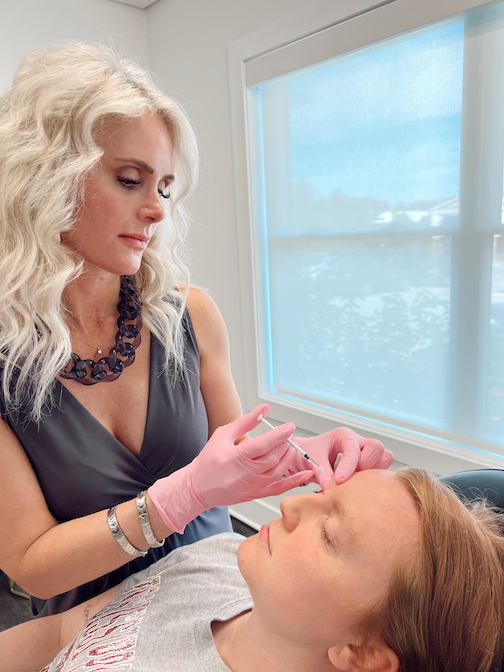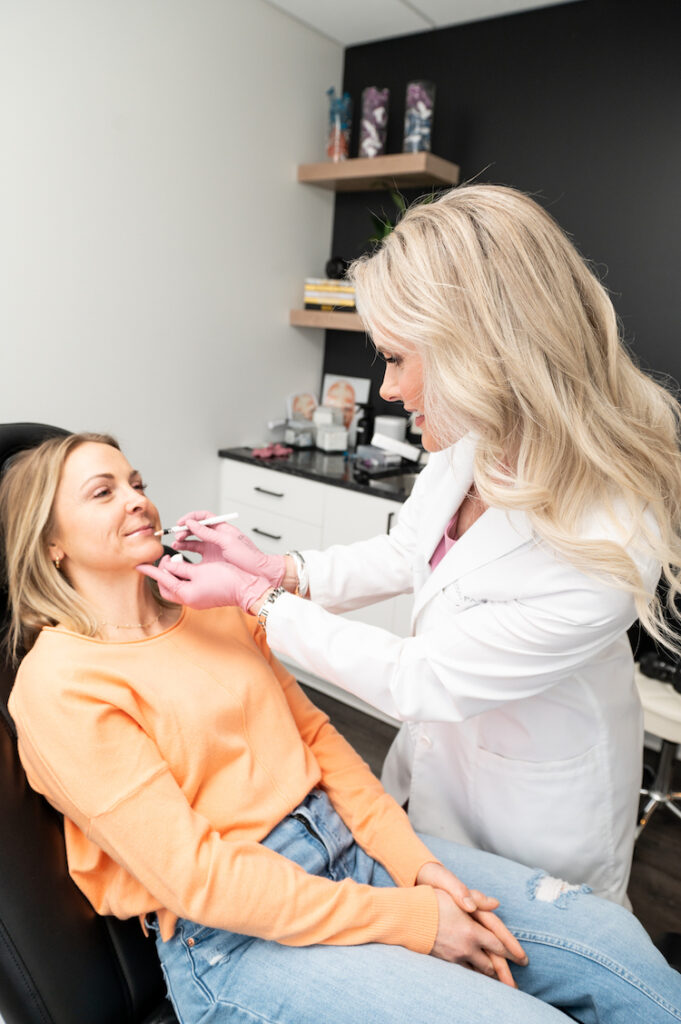
Let’s Talk About Hyperpigmentation

Hyperpigmentation is the result of the skin producing excess melanin. This can make patches on the skin appear darker than other areas if that excess melanin productions occurs unevenly. This is a common condition affecting patients of all ages and skin types but is more frequently noted in those who have a history of unprotected sun exposure or those who are pregnant. Sun spots and melasma can occur anywhere but are most commonly seen on sun-exposed areas, such as the face, legs, chest and arms.
Citrine Medical Spa in Lincoln Nebraska provides laser skin resurfacing and the newest technology of Intense Pulsed Light for the treatment of hyperpigmentation to patients in Nebraska.
Treating Hyperpigmentation with Laser Skin Resurfacing
Types of Laser Modalities
Ablative
This laser type wounds the skin and ablates the epidermis or the thin outermost skin layer while heating the underlying skin or dermis. This has an added effect of promoting collagen growth.
The treated area becomes smoother and more natural looking as the epidermis heals and grows. This removes superficial hyperpigmentation and sun damage. At Citrine we utilize Sciton’s HALO laser and the 2940nm wavelength erbium laser and is tunable from 20μm to 100μm to precisely vaporize tissue in a controlled manner to address hyperpigmentation, textural issues and pore size.
Non–ablative
These lasers are non-wounding in nature. They stimulate collagen production that helps in improving skin tone and texture by targeting the dermis or deeper layers of the skin. It also reduces hyperpigmentation. Non-ablative skin resurfacing requires less recovery time and is less invasive in nature. At Citrine in Lincoln we used the 1470 nm wavelength of HALO which is tunable from 250μm to 700μm to address deeper sun damage, stimulate collagenesis, and remove other dermal pigmentary issues.
Fractional laser can be used for performing both types (ablative and non-ablative) of laser skin resurfacing. This method leaves microscopic columns of untreated tissue which help stimulate repair of the skin and removal of debris through those columns. Fractional lasers like HALO allow for shortened recovery time compared to full ablative laser therapies so you can get back to work the same day if you wanted! At Citrine, we use HALO which allows us to do a combination of ablative and non-ablative treatment at the same time for the best possible results with the least amount of downtime.
Is the Procedure Painful?
Laser skin treatments are not painful because we apply topical numbing beforehand. During treatment it will feel like warm tingling but not overtly painful. Afterward it will feel like a bad sunburn for 1-3 hours.
Recovery
Laser skin resurfacing after HALO recovery is usually short. There is little to no downtime in most treatments. You would need to regularly moisturize, apply sunscreen, and avoid direct sun exposure or excessive heat. Your skin will be red then will have the texture of sandpaper for 2-4 days before sloughing off the debris to reveal baby soft new skin underneath. There is no significant wound care needed like vinegar soaks which are used after CO2 laser so if you don’t mind being a little pink there is no reason not to return to work.
Laser Skin Resurfacing is Safe
Certain laser systems are not recommended for darker complexions since it can lead to hypopigmentation (areas of lighter skin) or hyperpigmentation. However, HALO non-ablative laser treatments can be performed on medium to dark skin complexions.
Other Treatments used with Laser Resurfacing and HALO
Medical grade skincare is essential in order to get the best results and maintain them. At Citrine we carry the best lines of skincare that are backed by science and will give you a comprehensive skincare regimen for use before and after your laser treatment.
Essential Components to Treat Hyperpigmentation
Retinol: whether its retinol or prescription tretinoin this is essential because it thickens the skin enhances collagen production and encourages skin renewal making it one of the few scientifically proven treatments for anti-aging and hyperpigmentation.
SPF: sun protection is mandatory! A medical grade SPF is essential to protect the skin from further damage especially post laser when your skin is particularly sensitive to sun and photo damage. We recommend a physical sunscreen after treatment like SkinBetter’s Science ToneSmart SPF or ZO sunscreen and primer.
Hydroquinone: This topical medication will help reduce the production of melanin but must be used under the supervision of an experienced skincare provider like Kerri Otto PA-C because there are some risks of paradoxical hyperpigmentation associated with continuous use. Depending on the severity of the hyperpigmentation, a course of hydroquinone may be used prior to your HALO treatment to help enhance results.
Vitamin C: There are only two products on the market that are actually stable enough to get the Vitamin C to the skin before it degrades. Citrine carries SkinBetter’s Alto which is one of the two scientifically proven stable forms of topical Vitamin C. This should be used daily before and after treatment.
Hydrafacial: This is a great way to exfoliate the skin prior to a HALO treatment which enhances the results of the laser therapy. At Citrine, we recommend a hydrafacial and dermaplaning sometime in the week prior to your HALO treatment.





